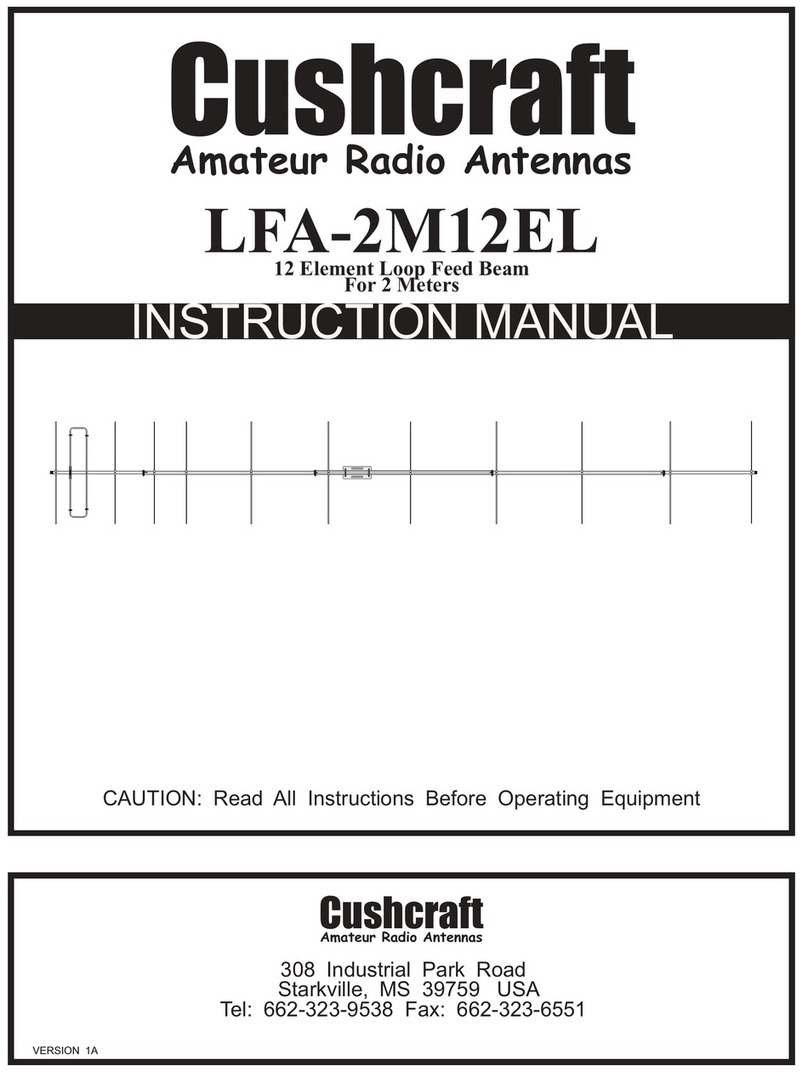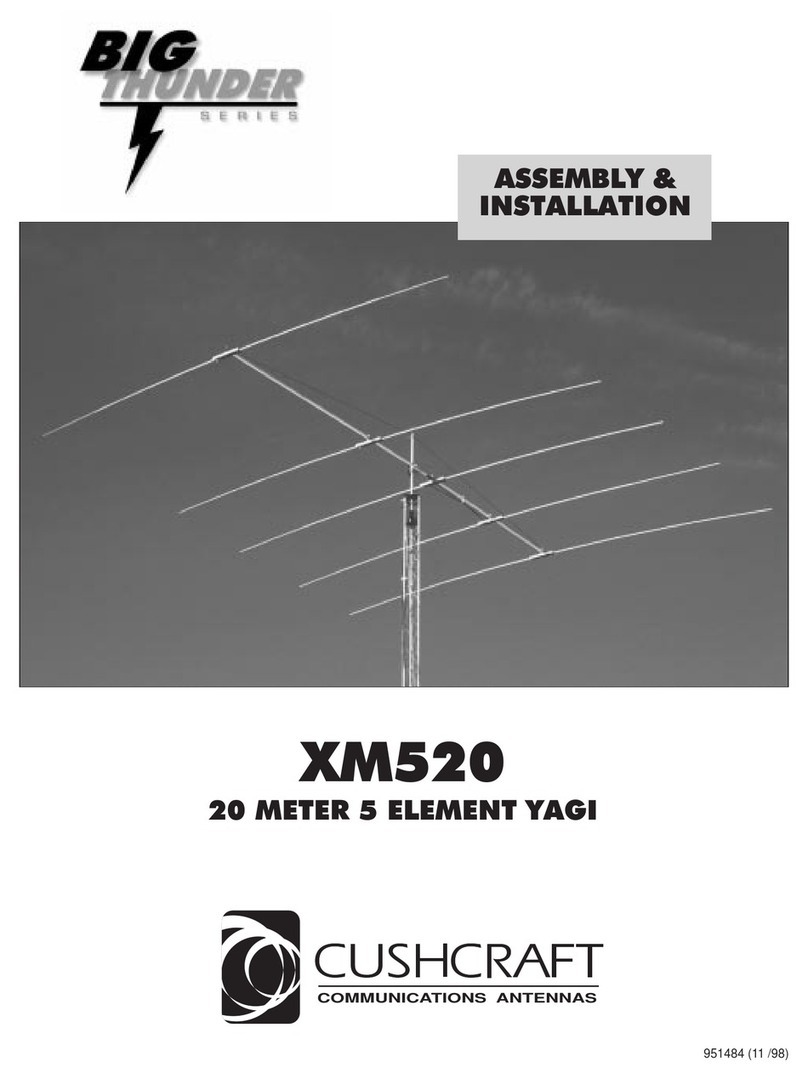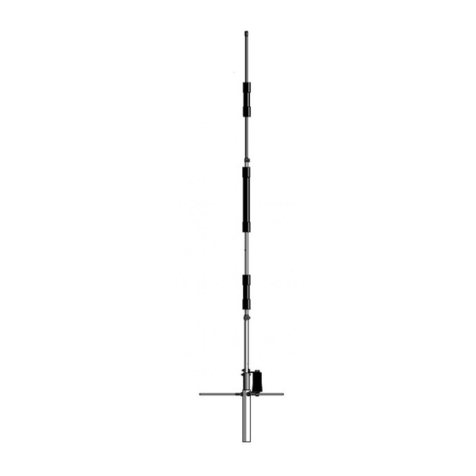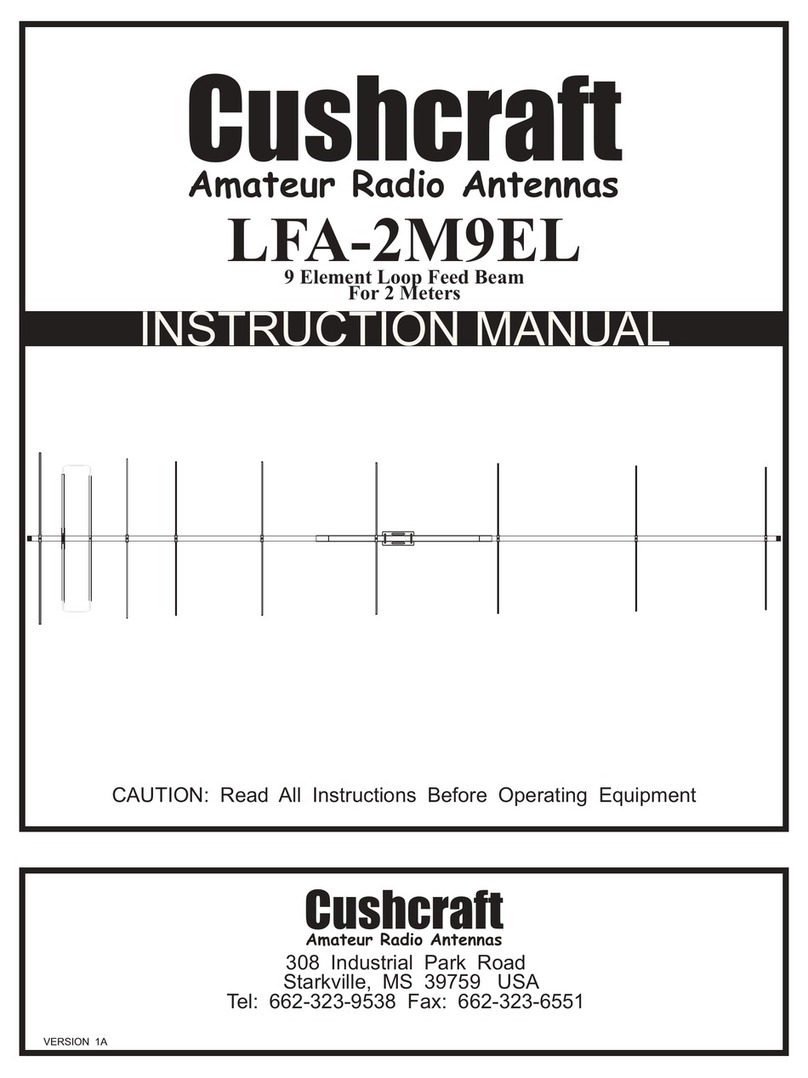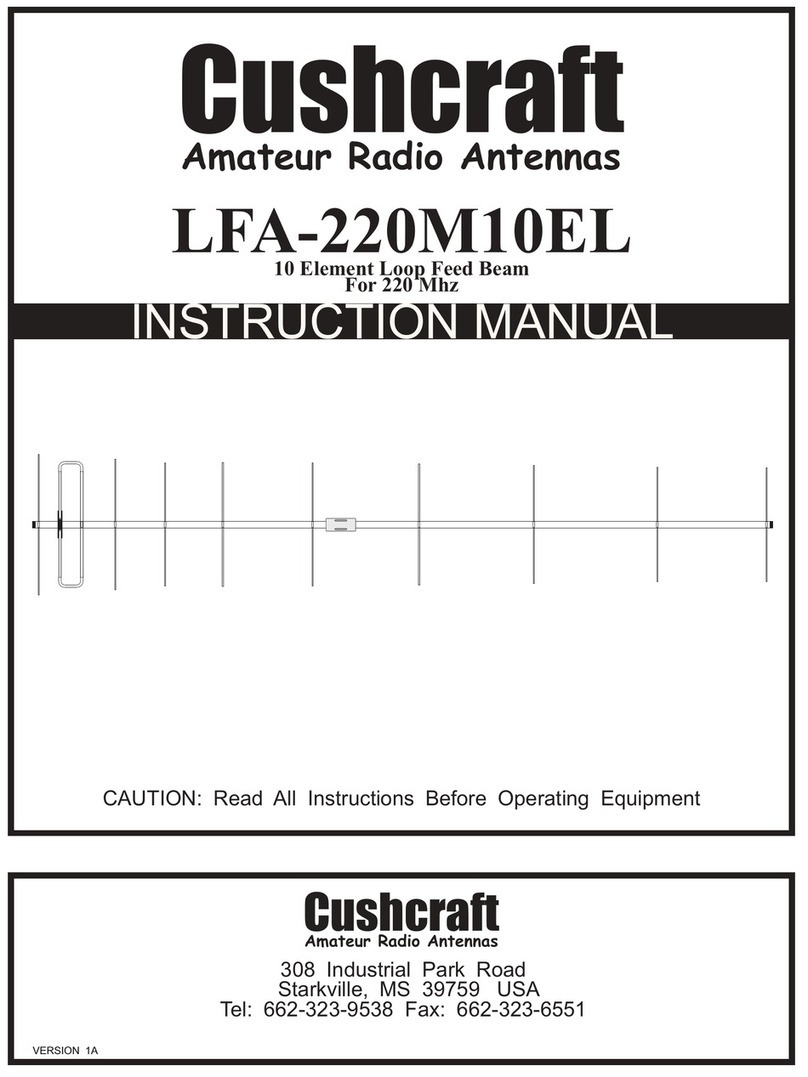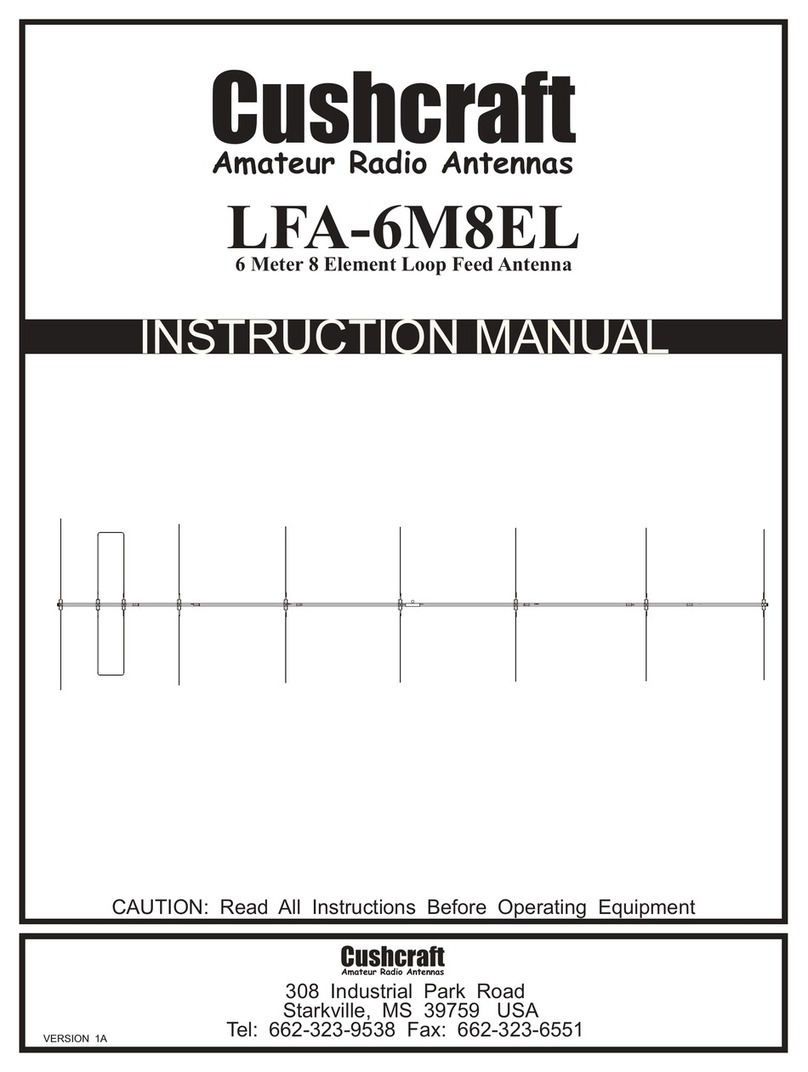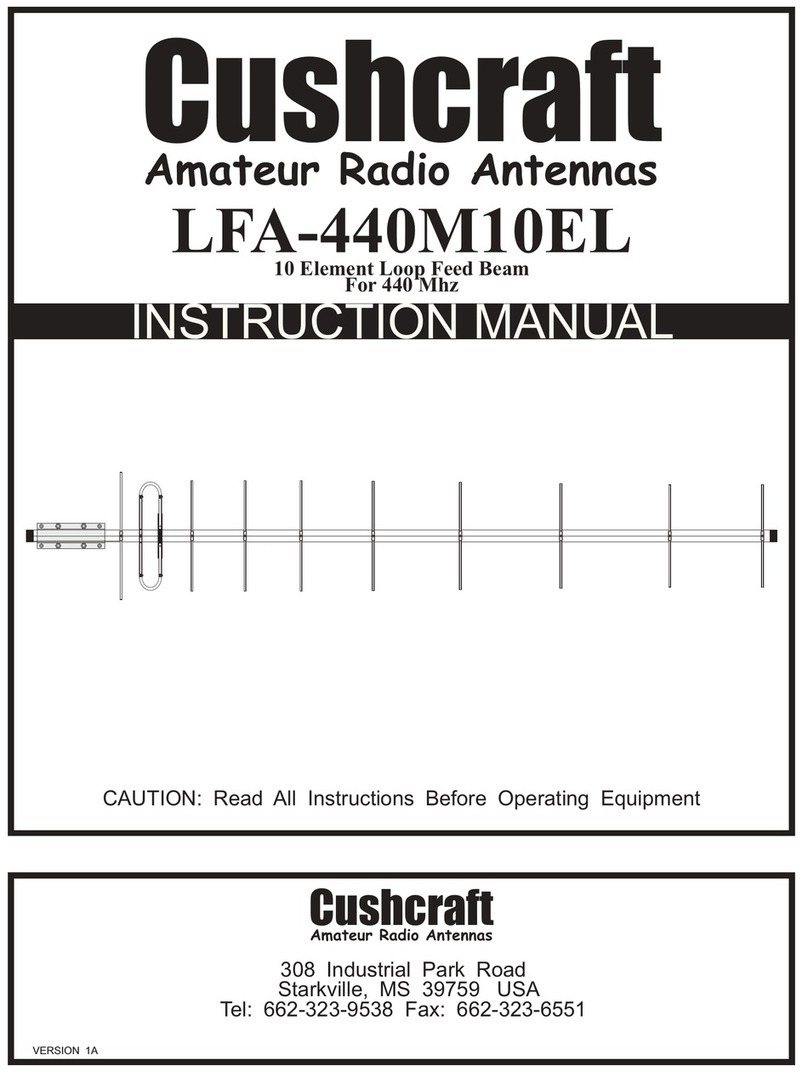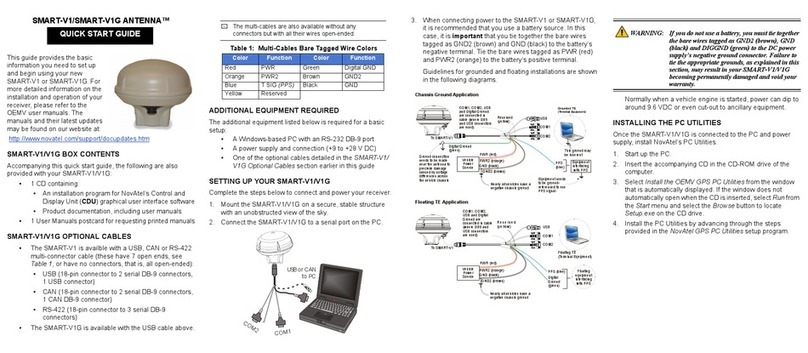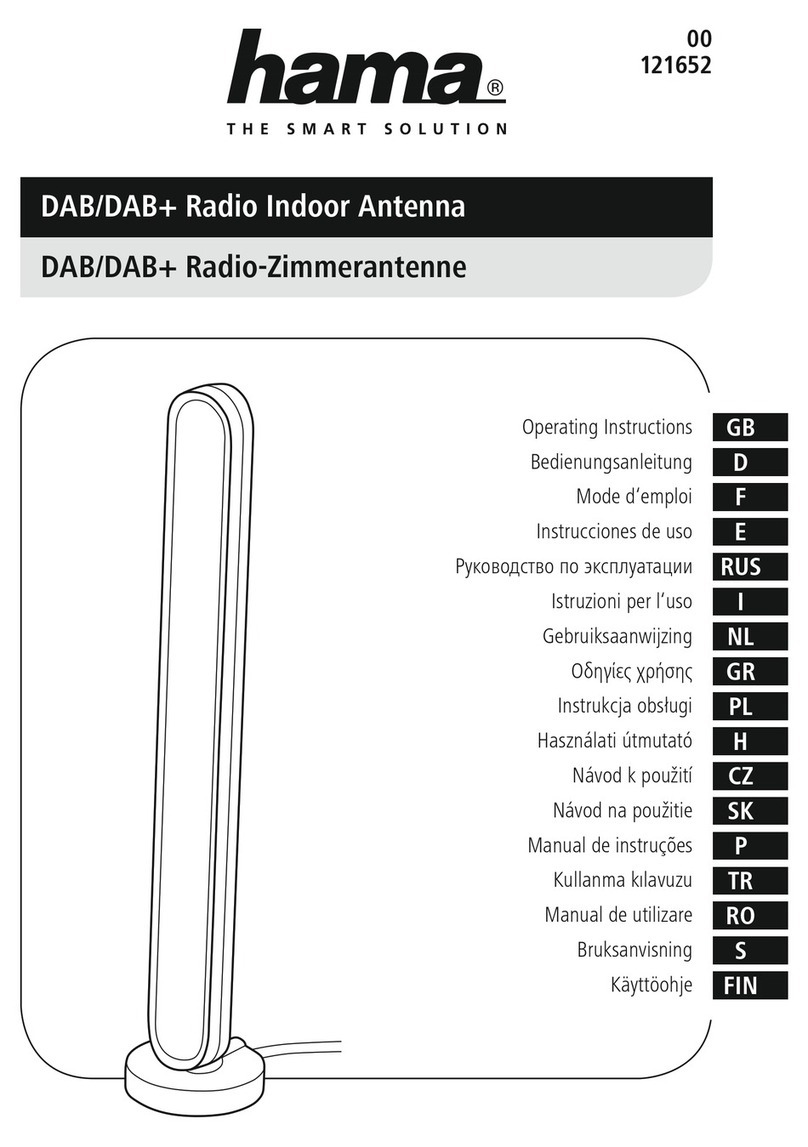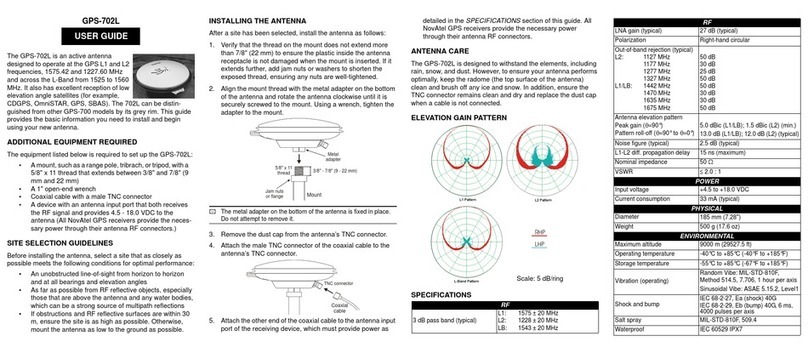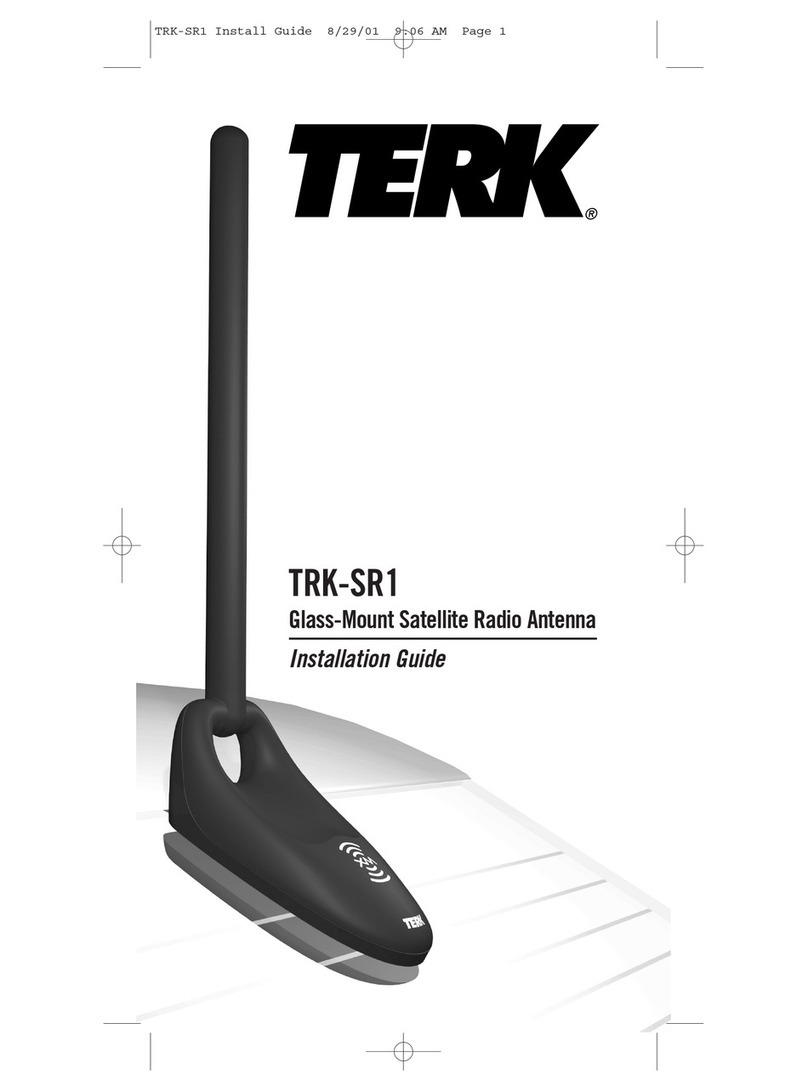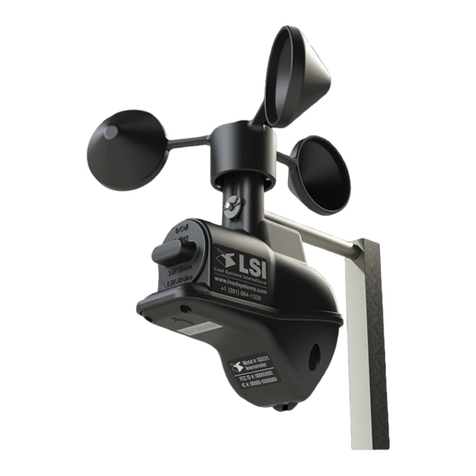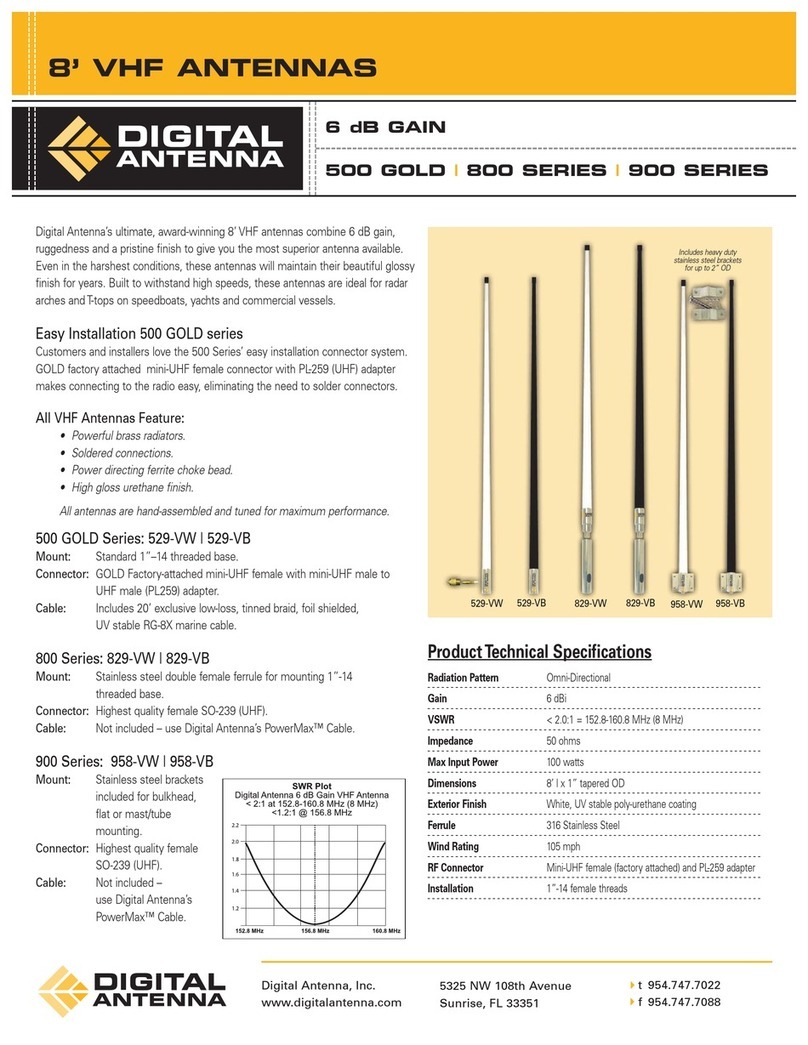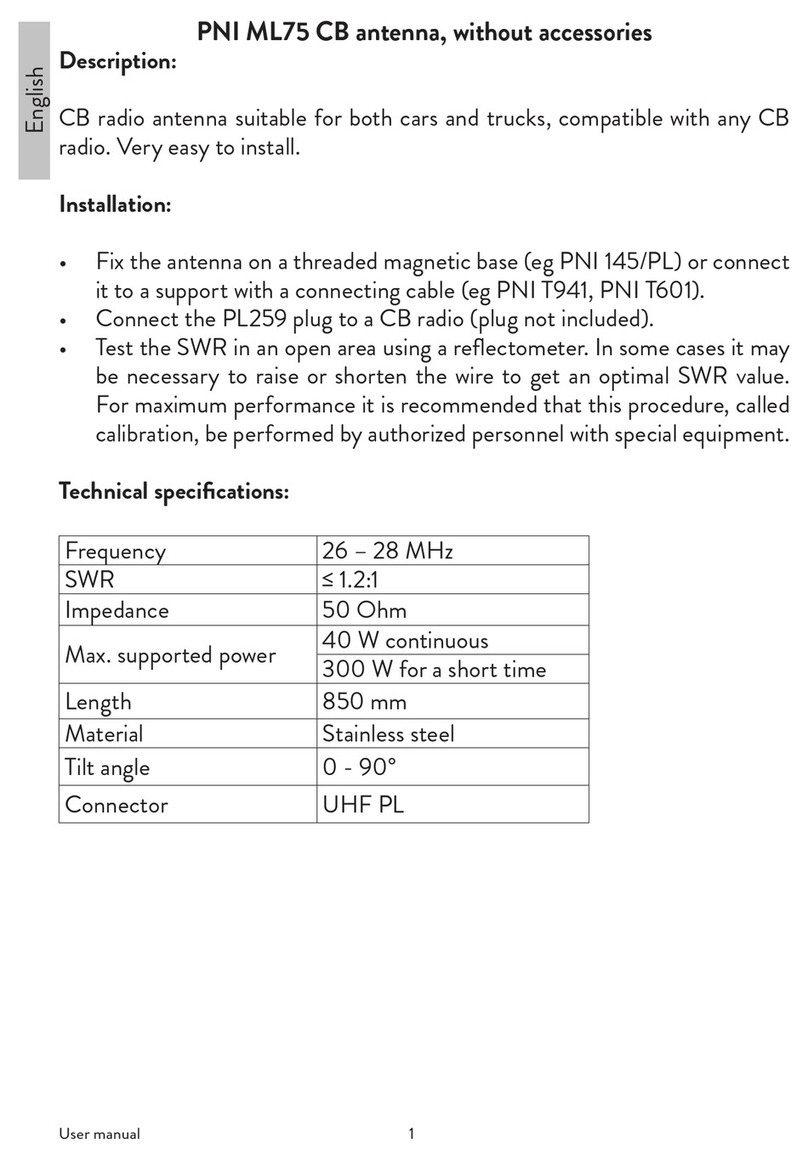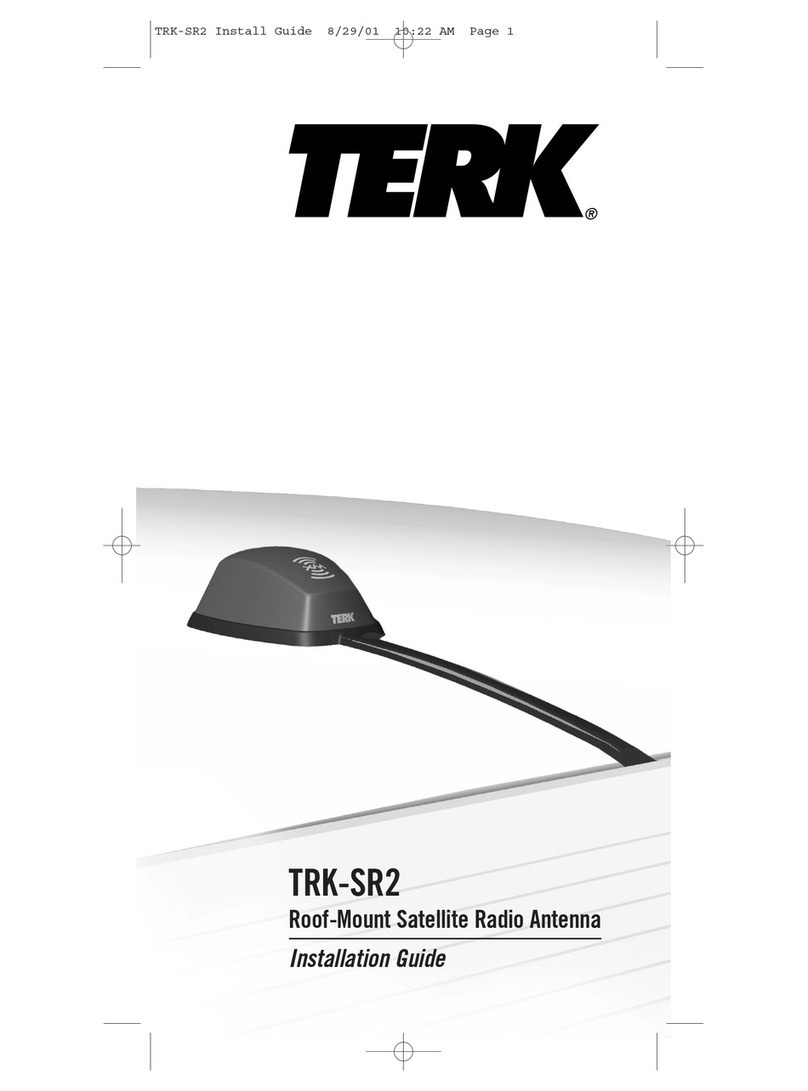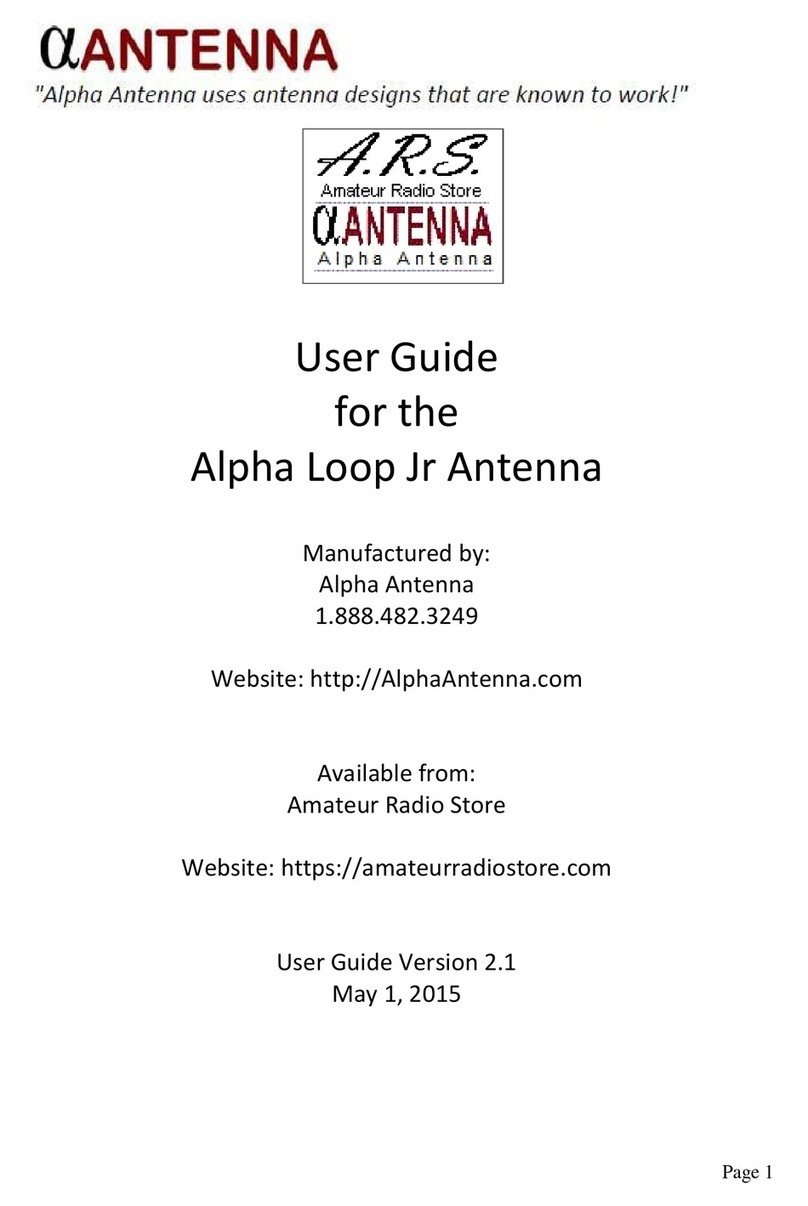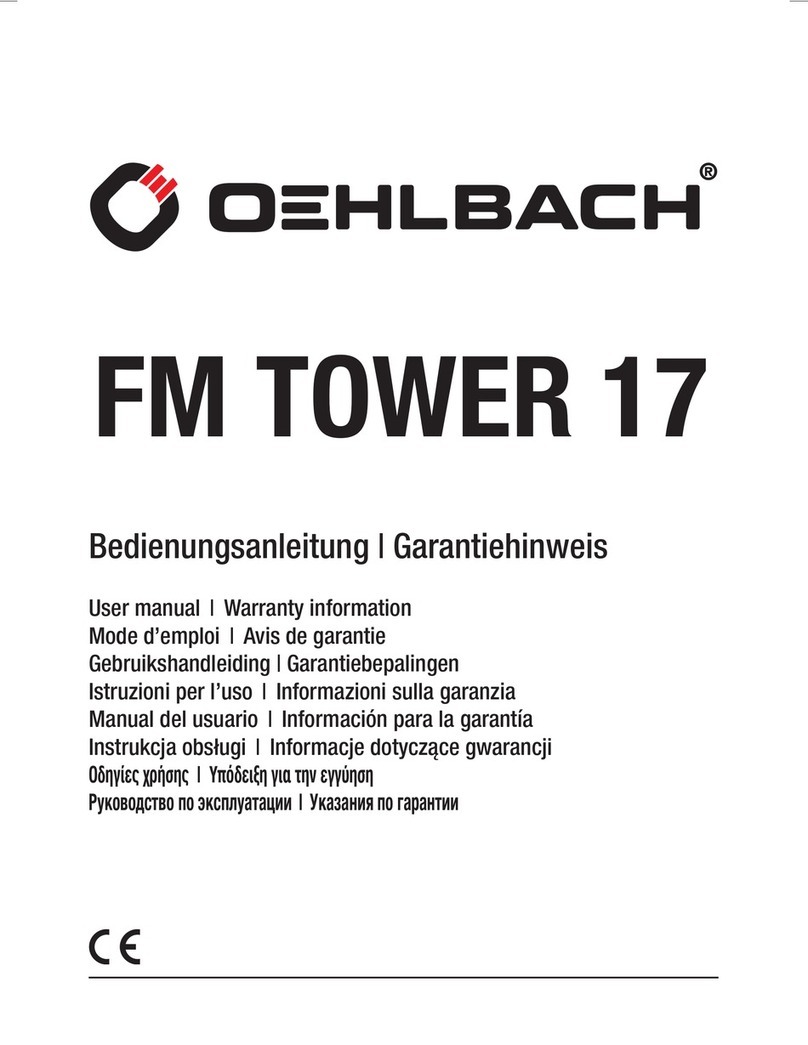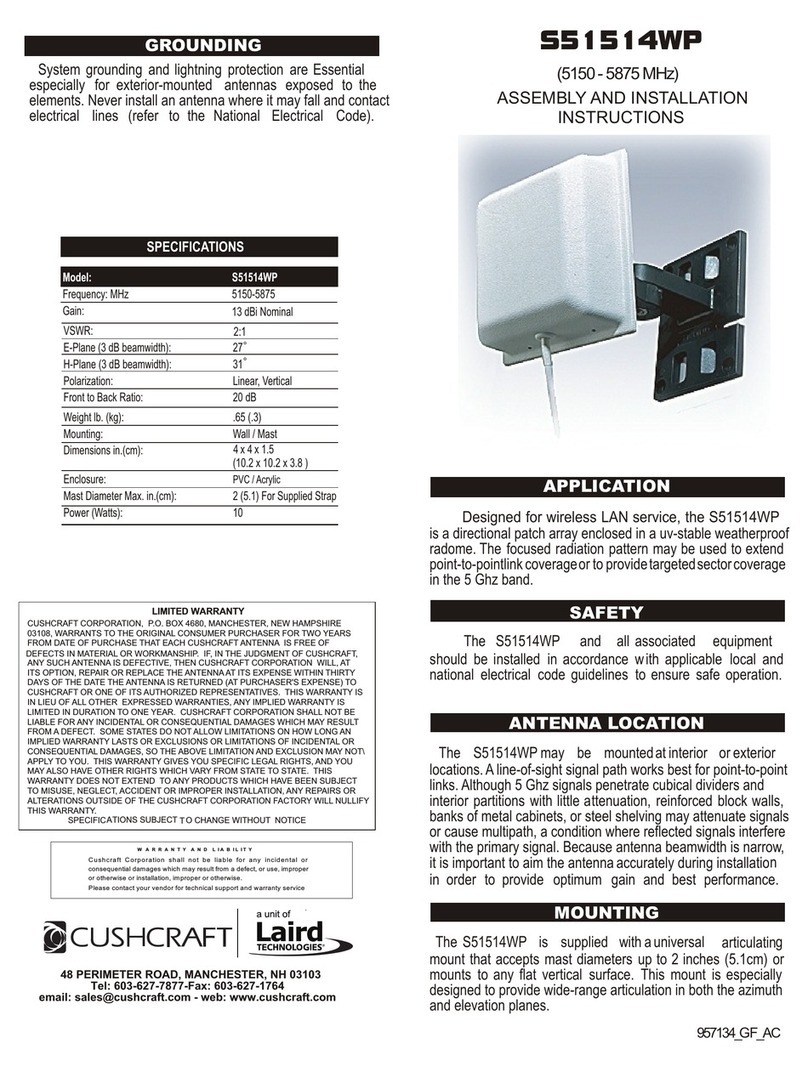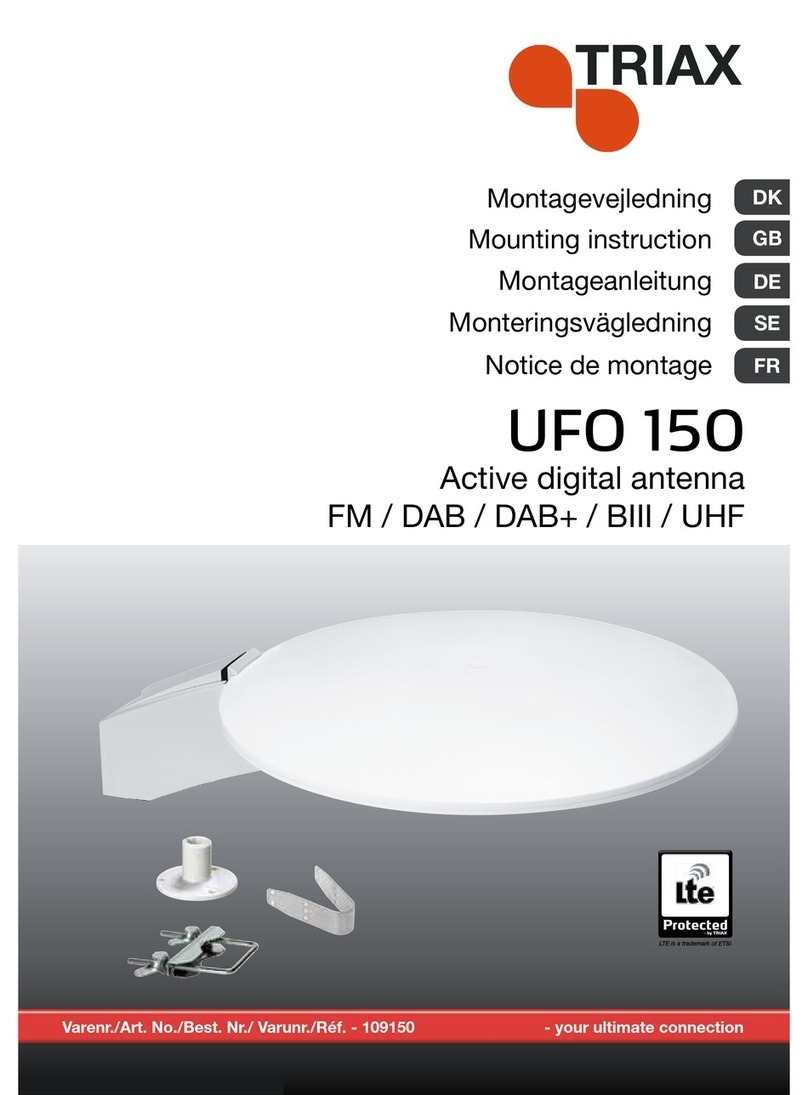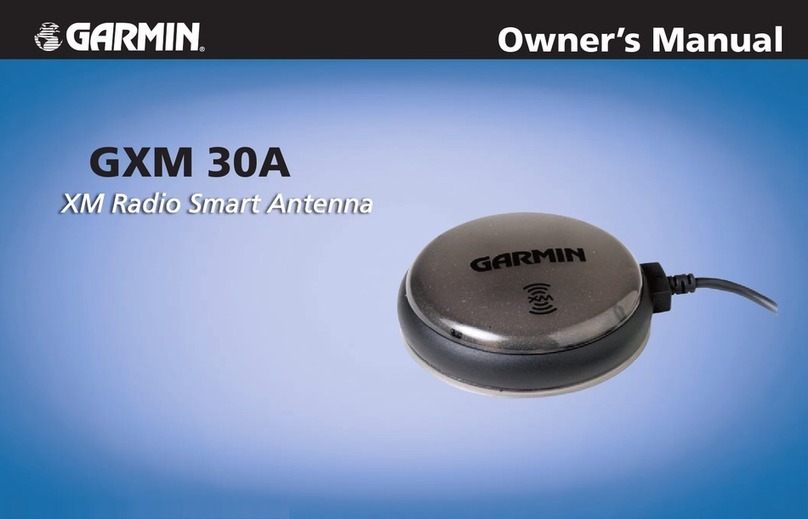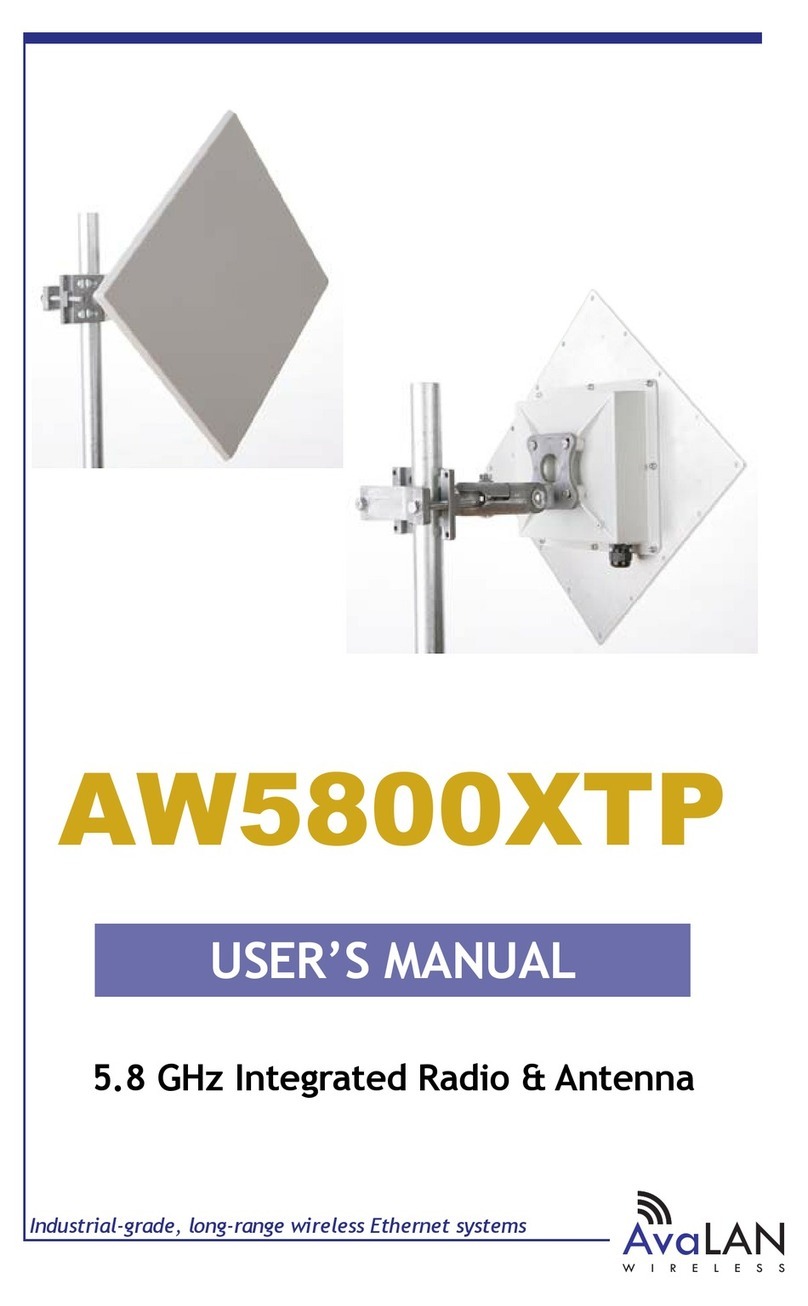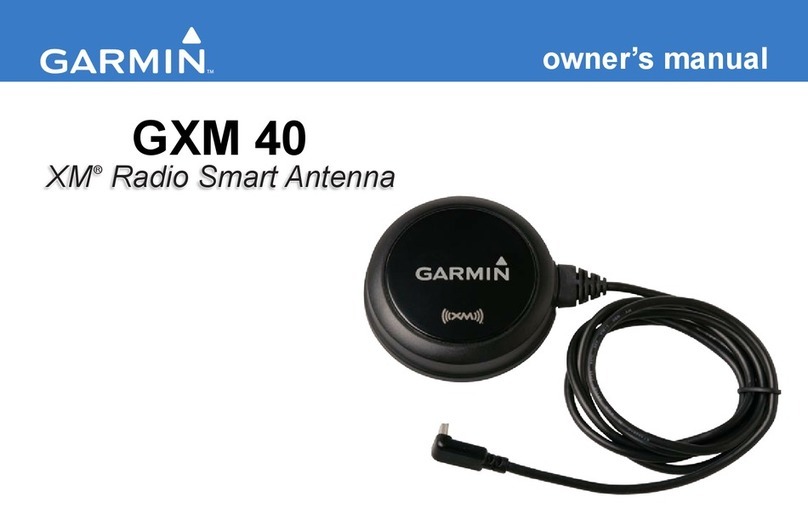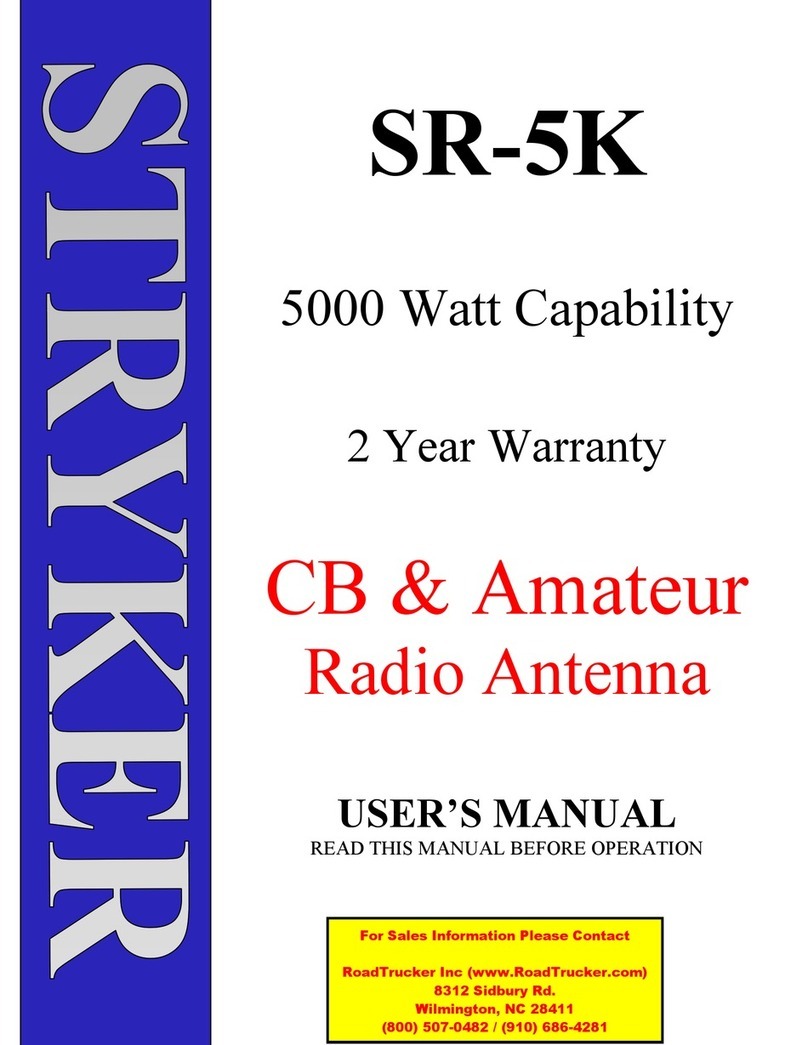
1
WARNING
THIS ANTENNA IS AN ELECTRICAL CONDUCTOR. CONTACT WITH POWER LINES CAN RESULT IN DEATH, OR SERIOUS INJURY. DO NOT
INSTALL THIS ANTENNA WHERE THERE IS ANY POSSIBILITY OF CONTACT WITH HIGH VOLTAGE OR ARC-OVER FROM POWER CABLES
OR SERVICE DROPS TO BUILDINGS. THE ANTENNA, SUPPORTING MAST AND/OR TOWER MUST NOT BE CLOSE TO ANY POWER LINES
DURING INSTALLATION, REMOVAL OR IN THE EVENT PART OF THE SYSTEM SHOULD ACCIDENTALLY FALL. FOLLOW THE GUIDELINES
FORANTENNAINSTALLATIONS RECOMMENDED BY THE U.S. CONSUMER PRODUCT SAFETY COMMISSIONAND LISTED IN THE ENCLOSED
PAMPHLET.
Your Cushcraft R7000+vertical antenna is designed and manufactured to give trouble free service. This antenna will perform as specified if
the instructions and suggestions in this manual are followed and care is used in the assembly and installation. When checking the components
received in your antenna package use the parts listed beside each diagram. There is a master parts list on page 2. If you are unable to locate
any tube or component, check the inside of all tubing. IMPORTANT: Save the weight label from the outside of the carton. Each antenna is
weighed at the factory to verify the parts count. If you claim a missing part, you will be asked for the weight verification label.
PLANNING
Plan your installation carefully. If you use volunteer helpers be sure that they are qualified to assist you. Make certain that everyone involved
understands that you are the boss and that they must follow your instructions. If you have any doubts at all, employ a professional antenna
installation company to install your antenna.
LOCATION
Although the R7000+will operate in almost any location, it will perform best if it is mounted vertically and located in the clear away from
surrounding objects such as buildings, trees, power lines, towers, guy wires, antennas and metallic objects. The R7000+should not be attached
to a ground radial system. Failure to heed these points will possibly degrade performance, detune the antenna and increase VSWR.
EXTREME CARE MUST BE USED FOR YOUR SAFETY. YOU MUST INSURE THAT WHILE THE The R7000+IS IN OPERATION NEITHER
PEOPLE OR PETS CAN COME IN CONTACT WITH ANY PORTION OF YOUR ANTENNA INCLUDING THE COUNTERPOISE RODS.
DEADLY VOLTAGESAND CURRENTS MAY EXIST. ALSO, SINCE THE EFFECTS OF EXPOSURE TO RF ARE NOT FULLY UNDERSTOOD,
LONG TERM EXPOSURE TO INTENSE RF FIELDS IS NOT RECOMMENDED.
MOUNTING
Your mast should be rigid and pointing straight up. Always use a mast at least 1-3/4 inches (4.4 cm) but not larger than 2-1/8 inches (5.4 cm)
in diameter. If you guy the mast, use non-conducting guys. GUYING
The R7000+must be guyed at the two points shown in Figure E. Non conductive UV stable 400 lb. tensile strength rope is supplied for proper
guying.
SYSTEM GROUNDING
Direct grounding of the antenna mast is very important. This serves as protection from lightning strikes and static buildup, and from high voltages
which may be present in the equipment attached to the antenna. A good electrical connection should be made to one or more ground rods
directly at the base of the antenna or mast using a least #10 AWG ground wire and non-corrosive hardware. For details and safety standards,
consult the National Electrical Code. You should also use a coaxial lightning arrestor. Cushcraft offers several different models, such as the
LAC-1, LAC-2 or the LAC-4 series.
ASSEMBLY
Assemble your The R7000+by following steps 1 through 3. After assembling the antenna, verify all dimensions in Chart 1 for accuracy. Then
return to the adjustment section below for final tuning.
ADJUSTMENT
The dimensions in Chart 1 normally allow proper operation on all the bands. However, some variations may occur from one location to another.
Adjustments must be made from the bottom of the antenna to the top. Adjusting the antenna from top to bottom will not work. This is because
the settings at the top are severely affected by the adjustments at the bottom.
We suggest measuring the VSWR of your antenna by using the SWR meter in your transceiver. If your transceiver does not have one, use a
good quality VSWR bridge for this application. Begin with 10 meters since this is at the bottom of the antenna. Set your transceiver at your
favorite frequency on 10 meters. Key the rig and check your VSWR. The R7000+ is extremely broadbanded on 10 meters and seldom needs
adjustment. If the VSWR is low enough (below 1.5:1) then move on to the 12 meter band. If the 10 meter VSWR is not low enough, adjust
the antenna as follows: Check several frequencies on 10 meters to find the frequency of lowest VSWR. If the frequency of lowest VSWR is
above your favorite frequency, lengthen dimension A (Figure A) by 1 inch (2.5 cm). This should lower the frequency of lowest VSWR by 50 to
100 KHz. If the frequency of lowest VSWR is below your desired frequency, shorten dimension A (Figure A) by 1 inch (2.5 cm). Check your
desired 10 meter operating frequency again to see if the VSWR is less than 1.5:1. Repeat this procedure until the VSWR at your desired
frequency is low enough. Adjusting Dimension Ais also used to move the resonant frequency of 12m.
Continue this procedure by selecting your desired frequency on 15 meters and checking the VSWR there. Dimension B (Figure A) should be
used to adjust the VSWR on 15 meters.
Remember to shorten this dimension to raise the frequency or lengthen it to lower the frequency.
The balance of the antenna should be adjusted in a like manner. The dimensions and the bands that they effect are shown in Figure A. On
10 through 20 meters 1 inch (2.5 cm) of change in length will change the operating frequency by 50 to 100 KHz. On 30 and 40 meters the
change will be 15 to 25 KHz per inch (5 to 10 KHz/cm). On 80 meters the change will be 7-10 KHz per inch (3 to 4 KHz/cm). When the antenna
is completely adjusted, check all fasteners to be sure they are tight. Improving VSWR's that are less than 2:1 will not noticeably improve station
performance.
R7000+
